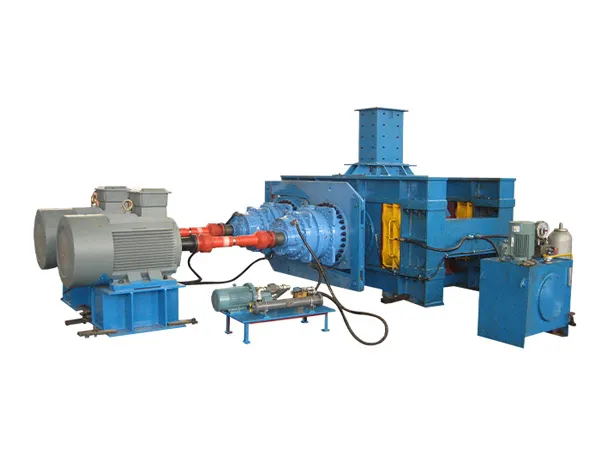HPGR повысить эффективность измельчения, прежде всего, за счет принципиально другого и более энергоэффективного механизма разрушения, называемого межчастичным измельчением.. Этот процесс не только потребляет значительно меньше энергии (20-50% меньше) чем традиционные мельницы, но также вызывает микротрещины в частицах, облегчение последующих стадий измельчения и улучшение выделения минералов, что повышает общую производительность завода и металлургическое извлечение.
Как оборудование HPGR повышает эффективность измельчения

1. Основной механизм: Как работает HPGR
Чтобы понять его эффективность, сначала нужно понять, как это работает, которая сильно отличается от обычной мельницы ПСИ или шаровой мельницы..
Введение в фид: Материал (руда) подается через бункер из бункера в зазор между двумя большими, встречно вращающиеся валки.
Зона высокого давления: Один рулон фиксированный, в то время как другой находится на гидравлической системе, которая позволяет ему двигаться, оказывая огромное давление (обычно >100 МПа) к материалу.
Сжатие слоя частиц: Поскольку материал втягивается в зазор, он образует сжатый “кровать.” Ключевым моментом является то, что давление не оказывается на отдельные частицы на стальной поверхности.. Верхнее и нижнее запечатывание этого мешка с клапаном с квадратным дном не требует шитья., сила передается через слой частиц.
Межчастичное измельчение: В этом секрет успеха HPGR. Сильное давление заставляет частицы сталкиваться друг с другом.. Измельчение «камень о камень» гораздо более энергоэффективно, чем удар и истирание камня о сталь, которые происходят в шаровой мельнице..
Увольнять: Материал выходит из рулонов в уплотненном виде., хрупкий “торт” или “отслаиваться,” который затем деагломерируется перед переходом на следующий этап.
2. Ключевые способы повышения эффективности измельчения HPGR
Повышение эффективности от этого механизма можно разбить на несколько ключевых областей..
а) Превосходная энергоэффективность (Основная выгода)
Это самое существенное преимущество. Измельчение является наиболее энергоемким процессом в большинстве горнодобывающих предприятий..
Прямое приложение силы: В шаровой мельнице, огромное количество энергии тратится впустую, просто поднимая тысячи тонн стальных шариков и жижи, при этом большая часть энергии теряется в виде тепла и шума при ударе. В HPGR, почти вся энергия двигателей и гидравлической системы передается непосредственно на слой частиц для разрушения.
Эффективный режим поломки: Межчастичное измельчение по своей сути более эффективно.. Он использует самые слабые места в структуре горной породы., требуется меньше энергии для достижения того же уменьшения размера.
Результат: Цепи HPGR могут потреблять 20-50% меньше энергии (измеряется в кВтч/тонну) чем традиционная схема ПСИ/шаровой мельницы, для достижения того же размера конечного продукта.
б) Генерация микротрещин (Улучшенная измельчаемость)
Сильное давление не просто разрушает частицы; создает высокую плотность микротрещин и изломов внутри частиц, которые не полностью разрушаются.
Ослабленный корм: Этот “предварительно ослабленный” материал подается на следующую стадию измельчения (часто шаровая мельница).
Более простое последующее измельчение: Шаровая мельница теперь работает намного проще. Требуется меньше энергии удара и меньше времени, чтобы разбить эти предварительно измельченные частицы до конечного целевого размера..
Результат: Этот эффект является основным фактором повышения производительности всего контура измельчения.. Шаровая мельница, которая ранее обрабатывала 1000 тонн в час теперь может перерабатывать 1200-1400 тонн в час продукта HPGR для достижения того же помола.
…
Более подробная информация о том, как оборудование HPGR повышает эффективность измельчения., пожалуйста, нажмите здесь: https://www.zymining.com/en/a/news/how-hpgr-equipment-improves-grinding-efficiency.html













